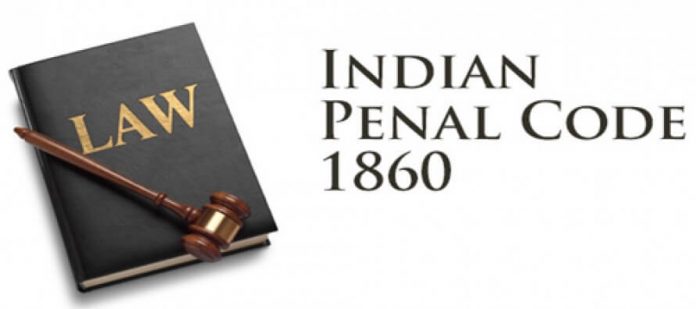This article is written by Michael Shriney from the Sathyabama Institute of Science and Technology. This article covers a brief overview of Section 332 of the Indian Penal Code of 1860, including its essentials, procedures, case laws, and differences between Sections 332 and 333 of the IPC.
This article has been published by Sneha Mahawar.
Table of Contents
Introduction
The voluntary cause of harm to stop a public servant from his job is covered under Section 332 of the Indian Penal Code of 1860. This Section was popular during the COVID lockdown when there was a rise in attacks against public officials, particularly police and law enforcement officers, who were struggling to ensure the safety of the country’s citizens. People were frustrated by newly enacted laws and began to fight against police nationwide while these public servants were performing their duties.
During the pandemic, there were several incidents in which people began to harm police officers on duty in various states. Sections 332 and 353 of the IPC are necessary and relevant in the recent times of pandemic to protect the rights of public servants. If the culprit knowingly causes harm to any public servant who is carrying out his duties, he would be charged under Section 332 of the IPC, 1860.
The following article will provide a brief overview of Section 332 of the Code, including relevant case laws and procedures.
Who is a public servant under IPC
To understand Section 332, it is necessary to first understand Section 21A of the IPC. Section 21A of the IPC deals with public servants. They are as follows:
- Every commissioned officer in the military is a public servant, both naval and air forces;
- Any judge or other legal authority is referred to as a public servant;
- Any individual officer in a court of justice is a public servant;
- Every juryman, assessor, or member of a panchayat assisting a court of justice;
- Any arbitrator or other person to whom a subject has been referred for investigation or resolution is also included and referred to as a public servant;
- Anyone who is empowered by law to hold a person in confinement is also a public servant;
- Every officer of the government who has the authority to prevent crimes, apprehend wrongdoers, conduct investigations or protect public health, safety or convenience are covered and included as a public servant;
- Any officer set up by the government to execute contracts on the government’s behalf, execute sale deeds or purchases in the government’s name, keep a record of all certified documents, and prevent law infringement. These officials are also regarded as public servants.
- A public servant is an officer whose job is on behalf of the government to charge taxes for the benefit of any town, village, or property.
- Anyone with the authority to compile, maintain, or update an electoral roll, or to conduct an election or a portion of an election is considered as a public servant;
- Anyone appointed by the government to receive remuneration or commission for performing government tasks or in the service of any government firm under Section 427 of the Companies Act, 2013 is also a public servant.
Section 332 IPC
Section 332 punishes committing voluntary harm or hurt to a public servant in order to deter him from doing his duties.
- Any person who voluntarily causes harm or hurt in the discharge of any person who is a public servant from his duty; or
- Any person whose intention is to prevent or deter that person; or
- Any other public servant who is discharging from his duty as a public servant; or
- Any person who has done anything or attempted to be done by that person in the lawful discharge of his duty as a public servant.
- If the above circumstances occur, anybody who intentionally harms a public servant gets a sentence of up to three years in jail, a fine, or both.
Example of Section 332 of the Indian Penal Code: If ‘A’ is a police officer, he is a public servant, and when doing his duties as a police officer, such as during a pandemic, all people are advised not to leave their homes until and unless there is an emergency. ‘A’ is responsible for keeping things under control throughout that period. At this moment, a passerby ‘B’ came out unnecessarily when ‘A’ attempts to examine ‘B’ and then ‘B’ hurts ‘A’, causing bodily harm. In this case, ‘B’ can be charged under Section 332 of the IPC, 1860.
Essential ingredients of Section 332 IPC
The essential ingredients to be satisfied for Section 332 of the IPC are as follows:
- The public servant must be engaged in discharging his duties;
- Harm or injury must be caused to the public servant;
- The act must be done with the intent to deter or prevent the public servant from discharging his duty;
- In any other case, any person does or attempts to do anything in the lawful discharge of his duty as a public servant.
Evidence required to convict under Section 332 IPC
The evidence necessary to establish an offence under Section 332 of the IPC is:
- The accused must voluntarily cause bodily pain, disease, injury, or harm to the victim;
- The victim must be a public servant who has been harmed;
- The public servant must be engaged in fulfilling his duties as a public servant at the time of causing harm.
- The accused must prevent or deter the public servant from doing his or her duties.
- This act must be done intentionally in order for the discharge of his role to occur.
Nature of the offence under Section 322 IPC
- Section 332 offences are cognizable, which implies that the accused can be arrested without a warrant. In these kinds of circumstances, police constables have the authority to arrest anyone who is infringing on the right without a court order.
- These offences are also non-bailable, which means that issuing bail is not a matter of right; instead, a person must appear in court, where the judge will decide whether or not to grant bail.
- These are non-compoundable offences, meaning the victim is unwilling to accept a compromise and file criminal charges against the accused.
- Section 332 of the Indian Penal Code can be tried in a trial court by a Magistrate of First Class. The department of internal security is part of the relevant ministry of home affairs.
Punishment for Section 332 IPC
A breach of Section 332 of the IPC, which deals with punishment for the offence of voluntarily causing harm in order to deter a public worker from doing his duties, can lead to a three-year jail sentence, a fine, or both. Any Magistrate Court can hear this case.
What is the procedure for filing a case under Section 332 IPC
The procedure for filing an offence under Section 332 of the IPC is as follows:
- When the crime is a cognizable one, the victim must go to the local police station and register an FIR (First Information Report).
- If any evidence relating to the offence committed by the accused is discovered, the police will arrest the accused. If there is no evidence to support the charge, the case will be dismissed.
- The charge sheet will be submitted following this procedure, and all evidence collected will be recorded in it.
- The case will be heard in court from both sides, a lawyer will be engaged, and a decision will be made.
For more convenience, one can also file under E-FIR. The breach of Section 295 of the IPC is a cognizable offence. The following are the steps to file an E-FIR:
- The victim must go to the official website of the local or involved police station.
- When the website opens, select the “services” option.
- After selecting the services option, a drop-down menu will appear, from which you must select the type of victim’s case.
- Once the category is chosen, a new page appears, asking the victim to enter information such as
- Complainant’s name,
- Mother or father’s name,
- Complainant’s email address,
- Date and place of incident,
- Complainant’s phone number, and
- any other important details about the case.
- Before submitting, double-check all the information and make sure the email address is valid since the FIR will be emailed to that address for future reference.
- After submitting the form, the user must verify their submission by entering the captcha code on the form.
The police may undertake an investigation following the FIR procedure, and if there is any substantial proof, the accused may be arrested without a warrant because it is a cognizable offence. If no proof is provided, the case is dismissed. If any serious evidence is discovered, the police create a charge sheet. After the charge sheet is completed, the case is taken to court for a trial, with the prosecution attempting to prove the elements of Section 332, and if successful, the accused may be sentenced to up to two years in jail, a fine, or both, according to the court’s discretion.
Case laws
Rajesh Rai v. the State of Sikkim, (2012)
Facts of the case
In this case, an under-trial prisoner hit a jail warden on the head with a wooden plant. He also beat another warden in order to escape from prison. The accused was a repeat criminal who was also involved in previous offences. The victims suffered severe injuries.
Issues involved in this case
The question was whether an accused should be punished for his offence against a public servant because he was a repeat offender involved in a variety of previous offences and was already imprisoned at the time of the offence.
Judgement of this case
The trial court decided that the judicial discretion to impose the maximum sentence after considering all aspects of the issue. The accused was sentenced to life imprisonment and a fine of Rs.20,000 for the offence committed by him, and if he was in default, he was to suffer for another 6 months, according to the proper judgement of the High Court.
D.S. Saravanan v. State rep. by the deputy superintendent of police, (2018)
Facts of the case
In this case, the victim was an executive officer in charge of Hindu religious and charitable endowments at a temple. His office is in one of the marriage halls linked to the temple where he had been working. The accused was occupying a nearby plot near the temple, and he needed some repairs done to his house. Without the victim’s consent, he began his repairs. The victim became aware of the incident and made a complaint to stop the work. However, the repair work was still continuing. The victim then urged the staff to stop their work. Then the accused arrived at the victim’s office, he grabbed his shirt, dragged him out, and punched his chest. The police filed an FIR for this offence. The accused was convicted under Section 332 of the Indian Penal Code.
Issues involved in this case
The question arises whether the trial court did not punish the appellant enough for the offence under Section 332 of the IPC.
Judgement of this case
The accused must pay a fine of Rs.1,000/-, as per the Principal District and Sessions Court, and the sentence imposed by the trial court would remain. If the offender is found to be in default, he would be punished with three months in prison under Section 332 of the Indian Penal Code. This was the decision of the High Court of Madras.
Sarvan v. the State, (2020)
Facts of the case
In this case, the complainant was an Air Force Sergeant. He and his wife arrived at the railway station platform, collected his bags, and began walking with his wife. A youngster took the complainant’s wife’s gold necklace and ran away while they were walking. While attempting to catch him, a Railway Protection Force (RPF) officer got stabbed in the hand by the culprit. The constable arrested the robbery culprit and was taken to the police station. A complaint was filed. The accused was found guilty under Section 332 of the IPC.
Judgement of this case
The Delhi District Court held that the accused is sentenced to 18 months in jail and must pay Rs. 5000/- in compensation to the victim. He would be imprisoned for 15 days if he was found to be in default.
Difference between Section 332 and 333 of IPC
| Subject matter | Section 332 IPC | Section 333 IPC | |
| 1. | Scope | Any person who voluntarily causes harm or injury to a public servant while performing his duties as a public servant; or | Any person who voluntarily causes grievous harm to a public servant while doing his duties as a public servant; or |
| 2. | Offence | This Section deals with a less severe offence. | This Section deals with a more severe offence. |
| 3. | Nature of offence | This is a less serious offence that does not lead to grievous hurt. | This is a more serious offence that leads to grievous hurt. |
| 4. | Penalty process | In comparison to Section 333, this section has a less severe punishment. | In comparison to Section 332, this section contains a harsh punishment. |
| 5. | Definition Section | Section 319 of the IPC contains the definition of hurt.. | Section 320 of the IPC contains the definition of grievous hurt |
| 6. | Punishment | A penalty under this Section is imprisonment for a term of up to three years, a fine, or both. | A penalty under this Section is imprisonment for a term of up to ten years and also liable to a fine. |
Conclusion
The article is concluded with a short statement on Section 322 of the Indian Penal Code, which is primarily concerned with public servants and falls under Section 21A of the Indian Penal Code. This section is particularly aimed at safeguarding public workers. If they are attacked or injured, this Section will apply to punish the culprit and protect the public servant. Offenders commit this offence in a violent manner in order to deter or stop public officials from carrying out their duties. This section also includes a penalty of severe imprisonment for a duration of up to three years, as well as a fine or both.
Any Magistrate Court has jurisdiction over this offence. In nature, this is a non-bailable, non-compoundable, and cognizable offence. The proof must be linked to the offence committed by the offender. If there is no evidence against the offender, the case will be dismissed. In this sort of case, evidence is required. There will also be a charge sheet to fill in these details and provide them to the court in order to show the offender’s guilt. There is no necessity for a warrant to arrest the offender; the offender can be arrested without a warrant which is issued by the court.
Frequently asked questions (FAQs)
- What offence is defined under Section 332 IPC?
The offence of causing hurt voluntarily to deter a public servant from doing his duties is defined under Section 332 of the IPC.
- What is the punishment for Section 332 IPC?
The punishment under Section 332 of the IPC is three years in prison or a fine, or both.
- Is Section 332 IPC cognizable offence or a non-cognizable offence?
Section 332 of the Indian Penal Code (IPC) is a cognizable offence.
- Is Section 332 IPC a bailable or non-bailable offence?
Section 332 of the Indian Penal Code (IPC) is a non-bailable offence.
- In which court can Section 332 IPC be tried?
In the court of Magistrate First Class, Section 332 of the IPC is being prosecuted.
References
- https://advocatespedia.com/SECTION_332_OF_INDIAN_PENAL_CODE
- https://www.lawtendo.com/indian-kanoon/ipc/section-21a
- https://www.lawtendo.com/indian-kanoon/ipc/section-332#:~:text=Section%20332%3A%20%E2%80%9CWhoever%20voluntarily%20causes,or%20attempted%20to%20be%20done
https://lawpage.in/criminal_laws/difference_ipc_332_353_18112020
Students of Lawsikho courses regularly produce writing assignments and work on practical exercises as a part of their coursework and develop themselves in real-life practical skills.
LawSikho has created a telegram group for exchanging legal knowledge, referrals, and various opportunities. You can click on this link and join:
Follow us on Instagram and subscribe to our YouTube channel for more amazing legal content.
 Serato DJ Crack 2025Serato DJ PRO Crack
Serato DJ Crack 2025Serato DJ PRO Crack











 Allow notifications
Allow notifications



